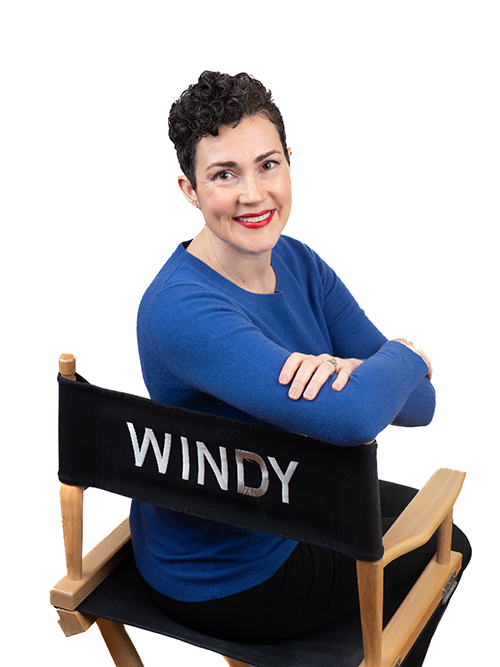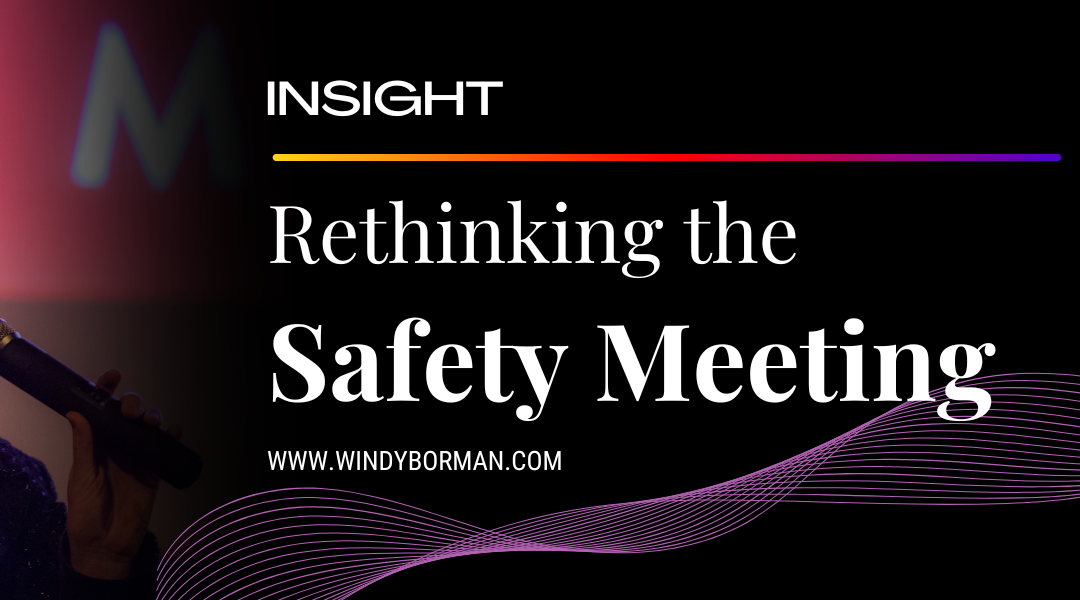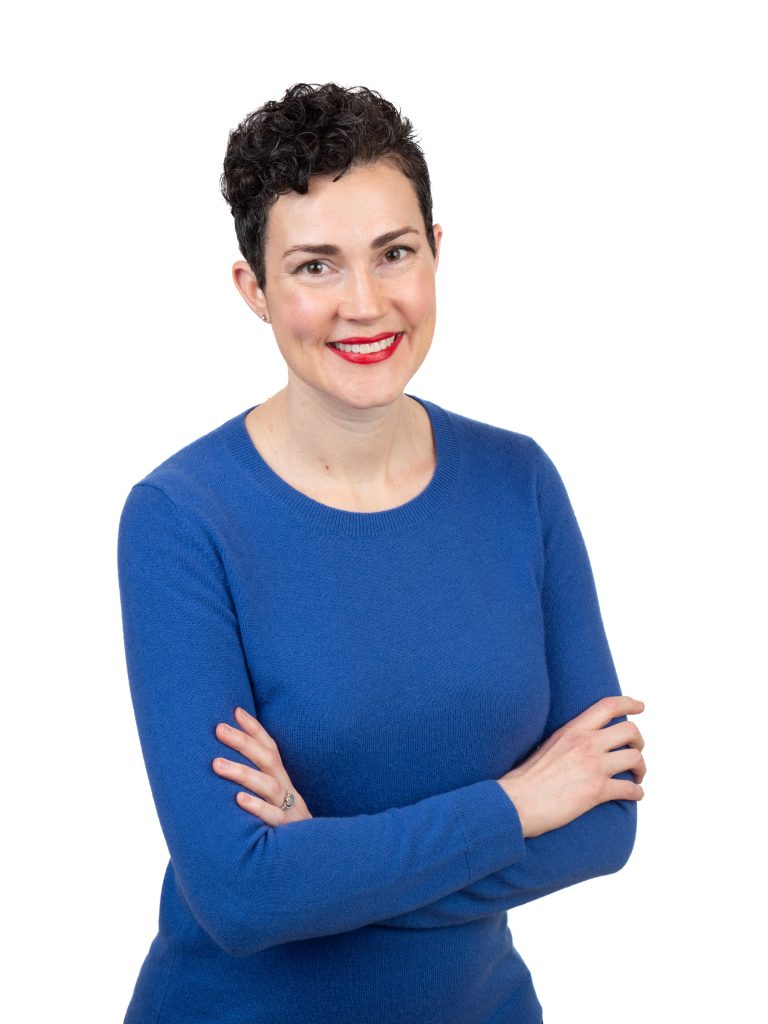Key Take-Aways:
- Consent occurs when one person voluntarily agrees to the proposal or desires of another.
- The acronym F.R.I.E.S. is a helpful way to remember the elements of consent.
- Personal boundaries are guidelines, rules or limits that a person creates to identify reasonable, safe, and permissible ways for other people to behave towards them and how they will respond when someone passes those limits. – Ann C. James
- Adding a Boundaries Check-In to your Safety Meeting is one way to create a consent-forward production or workplace.
Workplace safety meetings are commonplace, especially during the COVID era, and creative productions are no exception. Safety Meetings are a good opportunity to remind everyone about testing protocols, masking and sanitizing guidelines, and other safety measures or requirements.
They are also a good time for a Boundaries Check-In, as I learned directing a recent commercial for a well-known Pacific Northwest sneaker company that shall remain nameless.
Over the last year, I have studied consent-forward productions, which has included professional development in intimacy coordinating and trauma-informed practices for artists. Throughout my training, I’ve been inspired to see the intersections between my previous experience in acting, directing, dance, contact improvisation, stage combat, teaching, non-violent communication, and mediation.
From what I’ve learned, everything points to Consent.
What is Consent?
According to Wikipedia, consent occurs when one person voluntarily agrees to the proposal or desires of another. It is a term of common speech, with specific definitions as used in such fields as the law, medicine, research, and sexual relationships.
Planned Parenthood has an easy way to remember the elements of consent with the acronym: F.R.I.E.S.

You may be familiar with the concept of consent if you had comprehensive Sex Education or if you’ve ever had to sign a HIPPA or “Informed Consent” form at a doctor’s office or a hospital. However, consent applies throughout daily life, including when you let your kids borrow the car, when you subscribe to an email list or streaming platform, create a social media profile, or download an app to your smart phone.
In instances like borrowing a car, you may have a conversation to set some boundaries about how long can they borrow the car, how far can they drive, does it need to be returned with a full tank of gas, etc. Throughout the conversation, you can work your way through the F.R.I.E.S. checklist.
But how often do you mindlessly hit the “subscribe” button without reading the disclaimer for subscriptions, social media, and apps? I’m guilty of the mindless click-consent, too, but one of the consequences means we fail the F.R.I.E.S. threshold. For example, my consent may be Freely Given (no one coerced me) and Reversible (I can change my mind at any time), but it is not Informed, Enthusiastic, and Specific. Therefore, we do not have a consensual agreement.
If we are not mindful, we run the risk of failing to give and receive consent in our workplace, productions, and film sets, too.
What is a “Boundaries Check-In”?
Ann C. James, the Founder of Intimacy Coordinators of Color (ICOC), defines Personal Boundaries and the Boundary Check-In process in her Intimacy Captain Certification process, which I took in May 2021.
Personal boundaries are guidelines, rules or limits that a person creates to identify reasonable, safe, and permissible ways for other people to behave towards them and how they will respond when someone passes those limits.– Ann C. James
A Boundaries Check-In is an opportunity for everyone to share their personal boundaries. This can take the form of identifying boundaries for different areas of the body (such as in the case of actors, dancers, or performers), but we can expand this to include how someone would like to be greeted in the COVID area (hugs, handshakes, or waves from six-feet away), requests for asking before you move any of their equipment, or reminders about needing to end rehearsal or filming at a specific time.
If there is an Intimacy Professional on set or in rehearsal, they will include a Boundaries Check-In as part of their work with the actors.
But what about everyone else?
Everyone has boundaries and their boundaries should be respected. Therefore I encourage you to add a Boundaries Check-In as part of your full cast/crew/team Safety Meeting whenever possible.
How do boundaries support a consent-forward creative environment?
We are living in a time of uncertainty. It can be scary, frustrating, and awkward. On top of that, we are asking our crew, staff, and team members to be brave, vulnerable, open, and bring their whole selves. Unless we specifically ask, we do not know what emotions, experiences, or boundaries the team is bringing into the space.
Brené Brown summarized why checking in with your team is important during her Dare to Lead podcast titled “The Great Awkward” (24 January, 2022).
By default, we’re not our best selves in fear, and anxiety, and the unknown. So you if want people to choose courage, normalize the fear and normalize the awkward. – Dr. Brené Brown
In my recent filming example, I used the 15-minute window between taking our rapid COVID tests and receiving our tests results to normalize the fear and the awkward by facilitating a Safety Meeting and Boundaries Check-In. I began by defining the terms, and explaining one way to express a boundary is to say “You may…” or “You may not…”. I then modeled this by saying, “In the COVID era, you may greet me by giving me an elbow bump if you are comfortable with that level of contact”.
Our small crew took turns sharing their boundaries, and the discussion expanded into a Pronouns Check-In and clarifying how we could safely load, unload, and move equipment. We also co-created some guidelines about limiting sarcasm on set because it is hard to read when you can only see each other’s eyes over the KN95 masks. Although more important than our words, we were building an environment of consent, empathy, and trust.
Instead of 15 minutes of chit-chat, we built a spirit of collaboration rooted in our mutual respect for boundaries. The effects of this were acknowledged by the crew, talent, and client. I received positive verbal and written feedback, so I feel confident adding this to my normal Safety Meeting agenda moving forward.
How can you include a Boundaries Check-In at your next gathering?
At a physical workplace, ask your manager, team lead, or office manager to lead a Boundaries Check-In at your next Safety Meeting. If you’re the manager or boss, add it to your agenda.
On a film set, ask the 1st Assistant Director (“1st AD”), Production Manager, and/or Producer to add a Boundaries Check-In to the Safety Meeting.
On a theatrical or dance production, ask the Stage Manager, Director, Producer, or Creative Director to add a Boundaries Check-In to the Safety Meeting.
If starting with the full group feels intimidating or overwhelming, start by working with your team or a small group. Many productions are working in “pods” to limit COVID exposure. Ask the leader of your pod if you or they can facilitate a Boundaries Check-In at your next Safety Meeting as a test case. After you refine the process, ask to include a larger group.
In my experience, it is powerful, enlightening, and transformative to ask the question: “Do you have any boundaries or sensitivities that I should be aware of?” If it is not possible to do this as part of an official meeting, try adding it to your one-on-one conversations and see what happens.
Want to add a Boundaries Check-In at your next team meeting, rehearsal or production? Contact Me


